INSIGHTS
Only by the comradeship of scientific knowledge
and intuitive experience can we grow into true insight -- (S. Radhakrishnan)
The
Reflections page develops
a metaphysical point of view that emerges from what modern science tell us about
the material universe and what I see as spiritual and metaphysical reflections of
that knowledge.
Fundamental to this metaphysical view is the idea that the universe is not an accident:
it has been created and it is purposeful. The Creator (Spirit) is defined as what
exists without dimension outside of our spacetime. The view of human nature is that
the distinguishing feature of our material existence is self-awareness and that
our life in spacetime is, at its core, an interplay of the material and the spiritual.
This page presents essays that elaborate on several issues relating to the interplay
of the material and spiritual in the universe and in our lives.
Singularity
|
|
all of material existence emerged from awareness and
all of material existence rests on a foundation of uncertainty
|
All cosmological observations to date are consistent with the idea that our universe
began 13.8±0.13 billion years ago in an explosion known as the big bang. The big
bang started from a vanishingly small object known as a singularity. Except for
a very short (< 10
-32 seconds) period of initial inflation, the expansion
of the universe has taken place ever since then in accordance with Einstein’s General
Theory of Relativity: a theory that has been verified to great accuracy in many
experiments. According to this theory, spacetime, the coordinates that we use to
order our existence and describe the results of our observations, began with the
big bang and continues to expand as our universe expands. In this view spacetime
is not a mental construct; it is an inherent part of nature. Spacetime is defined
by the existence of matter and the curvature of spacetime is responsible for the
gravity that governs the motion of matter. Time, the coordinate we use to define
“before” and “after”, began with the big bang. That is why the question of what
existed before the big bang is a meaningless
scientific question. The singularity
from which the big bang emerged is outside of our spacetime.
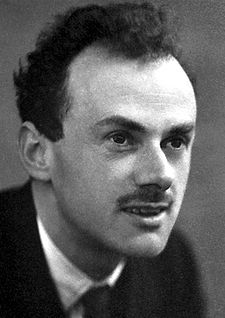
|
|
Paul Adrien Maurice Dirac
|
Paul Dirac (1902-1984) was one of the early pioneers of quantum mechanics and one
of the greatest theoretical physicists of the 20
th century. It was he
who first made quantum mechanics consistent with Einstein’s Special Theory of Relativity:
a connection that leads to the prediction of the existence of antimatter and lays
the foundations of modern quantum field theory. Dirac won the Nobel Prize in 1933
(together with Schrödinger) for his work in quantum mechanics. He became the
Lucasian Professor of Mathematics at Cambridge: the same chair occupied by Sir Isaac
Newton and, today, by Stephen Hawking. In his beautiful textbook,
The Principles
of Quantum Mechanics, first published in 1930, Dirac introduced the concept
of the Heisenberg Uncertainty Principle with the following statement:
There is a limit to the fineness of our
powers of
observation and the smallness of
the accompanying
disturbance—a
limit which is inherent in the nature
of things and can never be surpassed by improved
technique or increased skill on the part
of the
observer.1
(emphasis mine)
The uncertainty principle effects measurements at all length scales, though such
effects are completely negligible at the scale of classical physics. But what Dirac
recognized is that the spacetime with which we describe the results of our observations
is subject to complete uncertainty when we try to use coordinates less than some
limiting size. If we try to observe nature with spacetime below this limit, we will
so hopelessly disturb nature that causality will no longer apply and there is only
uncertainty. Whatever existence there may be below this limit, a region usually
referred to as the vacuum or void, is total, unobservable uncertainty.
What is the limiting size of spacetime? It is generally assumed that as the universe
expanded from the singularity it passed through a spacetime state where everything
was unified and only one force was in play. This is the point at which gravitational
and quantum forces are of equal strength: they are unified. The natural spatial
length at which this unification occurs is based on the values of three experimentally
determined universal constants: Planck’s constant from quantum mechanics, the speed of light
from Special Relativity, and the gravitational constant (a number that comes into
play in all gravitational interactions) from General Relativity. This length is
called the Planck length and, using the present day values of the constants, it
is of the order of 10
-35 meters. It seems logical to associate the observation
limit with this unification limit: the singularity in which everything was unified
was outside of our spacetime and therefore also in the realm of the unobservable.
So, observation tells us that all that exists in the universe emerged from a singularity
that lies outside of spacetime and that there is a region of uncertainty at the
base of the spacetime defining all of material existence. In the
Reflections
I defined all that exists outside of spacetime as Spirit so, with this definition,
our observations could be rephrased as:
all of material existence emerged from Spirit
and all of material existence currently rests
on a foundation of uncertainty.
The question is: What is Spirit? The first thing to remember is that there can be
no scientific answer to that question (scientific theories can only be tested within
our spacetime.) It is a completely metaphysical question.
Other metaphysical
choices are to
believe that Spirit is simply uncertainty itself or to deny that it exists at all.
That is the point of view taken by Stephen Hawking and Leonard Mlodinow in their
recent and popular book,
The Grand Design2. They choose to believe
in the existence of a multiverse that contains an infinite (they admit to only 10
500)
number of universes each with their own spacetime and physical laws. In their view
each universe arises from spontaneous creation. (This is, in principle, no different
from the idea that each universe arises from fluctuations in an infinite quantum
vacuum that I
discussed
in the
Reflections.) Their explanation for the fact that the conditions
required for self-aware life to exist in our universe are nothing short of miraculous
(probability of 10
-100?) is simply that an event with a probability approaching
0 is bound to occur in a population approaching infinity. (In a truly infinite population,
it will occur infinite times!) Their metaphysical choice then leads to the belief
that the universe is an accident; everything is random; there is nothing outside
of the multiverse so there is, literally, no room for Spirit. It is important to
keep in mind that the theory of the multiverse is a metaphysical theory based on
mathematics and imagination. It is not a scientific theory since it can neither
be verified or falsified by observation. Looking back in time, our science stops
at the singularity.
The point of view that I
developed
in the
Reflections is based on the metaphysical
choice to believe that Spirit is awareness (or, if you prefer, consciousness).
So, with this choice for all that exists outside of our spacetime, the summary of
our observations about the origin and nature of our spacetime reads:
all of material existence emerged from awareness
and all of material existence currently rests
on a foundation of uncertainty.
In this view, the singularity from which all existence emerged is awareness. Awareness
operates to produce certainty out of uncertainty. This operation establishes a direction
for the evolution of our universe and the existence of this direction allows for
a definition of the purpose and meaning of material existence. I believe the direction
is related to the evolution of self-aware beings in the universe: invoking what
might be called the
ultimate anthropic principle.
The singularity was infused with the creative principles (natural laws) that governed
the birth and continue to govern the evolution of our universe. The goal of all
science is to become aware of those natural laws through observation and reason.
We already know from quantum mechanics that indeterminism (uncertainty) is at the
core of these natural laws. Spirit, all that is outside of our spacetime, cannot
directly enter and affect the material world inside spacetime. That would be a contradiction
of the nature of Spirit. Furthermore, because of the inherent indeterminism of the
material world, not even an omniscient awareness (operating within our spacetime)
could predict the detailed unfolding of the universe. This would put a contradictory
limit on the presumed omniscience of Spirit, the Creator. There is, however, a means
for Spirit (Awareness) to
indirectly affect the material world by acting
in cooperation with self-aware beings whose existence includes an immaterial aspect
that is outside of spacetime. On the planet Earth, those beings are us and our immaterial
aspect is what we call our individual soul. I say "cooperate" because,
just as indeterminism is at the heart of the natural world, free will is at the
heart of human nature. (Further discussion of the idea of an individual soul is
presented below in the essay "Emergence of Spirit".)
Once again, I want to point out that the metaphysical choice of Spirit as Awareness
is just as valid as the choice of Spirit as uncertainty or the complete denial of
the existence of Spirit and there is no
scientific test that can be used
to distinguish among these choices. I believe, however, that the effects of direction,
purpose and meaning implied by the choice of Spirit as Awareness are reflected in
the evolution of our own self-awareness and are observable to anyone whose mind
is open to the possibility.
1. P.A.M. Dirac,The Principles of Quantum Mechanics,Oxford
University Press, 4th ed, 1958 (first published 1930), 3-4.
2. Stephen Hawking and Leaonard Mlodinow, The Grand Design, Bantam Books,
2010.
Emergence in Nature
|
|
An army ant is an almost blind minimally intelligent creature. Put a hundred of
them on a flat surface and they will wander in circles until they die of exhaustion.
But put a half a million of them together and they become a superorganism displaying
amazing intelligence and survivability. A new level of existence - the colony- has
emerged.
|

|
As a physicist who began his research career in experimental particle physics I
fully appreciate the value of reductionist thinking. Looking at matter through increasingly
powerful "microscopes", the discovery of the nucleus led to an understanding
of atomic structure; the discovery of the proton and neutron led to an understanding
of nuclear structure; the discovery of quarks has led to an understanding of the
forces holding the proton and neutron together. And so it continues: one of the
objectives of the experiments planned for the Large Hadron Collider (LHC) at CERN
is to probe even deeper to look for possible structure within the quarks. (The discovery
of quark structure would completely change our current physics model for the nature
of matter.) We are trying to understand the nature of the whole (matter) by discovering
all of its constituent parts and, hopefully, the relationships among the parts.
The latter is important, because, as Dirac once pointed out, if you want to understand
the game of chess you have to know the rules governing the interaction of the pieces:
whether the pieces are made of ivory or wood is irrelevant.
But looking beyond the "simple" world of particles and fields we find
there are many complex adaptive systems that require a different kind of thinking
in order to understand them. These are systems with so many individual parts and
with such a multiplicity of relationships (interactions) among the parts that the
whole of the system is larger than the sum of its parts. The added element is the
network of relationships among the parts that obeys its own rules; e.g., scalability,
self-similarity, regulation, self-organization, etc. A new phenomenon (level of
existence) has
emerged from the
complex system because of this network of interactions. The limits of reductionist
thinking come about because reductionism does not usually attempt to understand
the rules of the network
itself (as opposed to the rules operating within
the individual links) or to take into account the two-way feedback between the network
and the environment in which the system is embedded. This two-way feedback implies
there is a top-down causality at work whereby the emergent collective state produces
changes in the individual agents through the network. To understand the real
world in which we live and function, reductionist thinking must be complemented
by network thinking.
There are many examples of emergent phenomena in the world around us. The most obvious
ones are those associated with the origin and evolution of life. About a billion
years after the formation of the earth single cell organisms emerged from the complex
soup of organic molecules that had formed in the early oceans. The exact sequence
of events leading to this emergence is not yet understood: it's the ultimate
chicken and egg question - Which came first, the membrane or the protein replication
systems inside the membrane? But, however it happened, it's clear that a new
level of existence had appeared on the planet. Biology had emerged from chemistry
and an understanding of biological evolution cannot be reduced to an understanding
of chemistry. Because of the increasing complexity of the environment (much of it
caused by life itself) and of individual biological structures (genetics) the evolution
of the biosphere has produced incredible biodiversity and the emergence of complex
social systems. The social systems in turn have caused changes in the individuals;
for example, the emergence of language in human society.
A vivid example of emergent phenomena can be found in the behavior of insect colonies.
Take, for example, the army ants of the Brazilian rain forest
1. Each
individual ant is nearly blind and displays only rudimentary intelligence. It can
respond to certain chemical signals from other ants, has an instinct to find food
and fight intruders. If you put a hundred army ants together on a flat surface they
will wander around in circles until they die of exhaustion. If you put a half a
million of them together they will form a super organism that displays a very sophisticated
collective intelligence that has no leader or central coordinator. When foraging,
the collective will march in a fan shaped swarm efficiently devouring everything
in its path, carrying away that which can't be immediately eaten. At night they
link their bodies together in the shape of a meter wide ball sheltering the young
larvae and the queen mother at the center.

|
At dawn, the ball dissolves and each ant takes its place again in the swarm. When
nesting they use soil, twigs and leaves to build huge nests of great strength and
stability. These nests include large arrays of underground passages
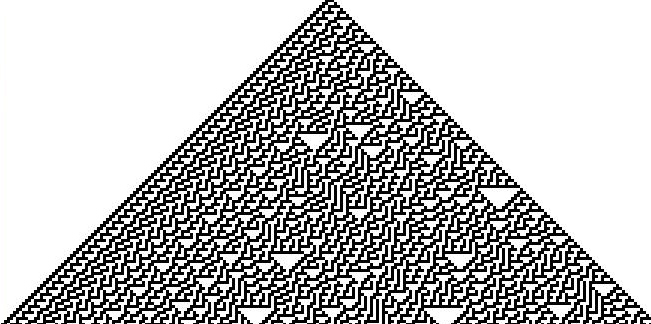
|
|
1D cellular automata obeying Wolfram rule 30
|
and dry warm nursery chambers whose temperatures are carefully controlled by decaying
plant material and the ant's own bodies. When traveling between nests they
will link their bodies together to form bridges across gaps that impede the flow
of the swarm. They respond collectively to threats posed by weather or intruders.
All of this leaderless, cooperative, very intelligent behavior emerges in the collective
through the network of interactions among the minimally intelligent individuals
within the collective. It's not yet understood exactly how this comes about
but practitioners of Complexity Science are actively studying these and related
phenomena (typically, using computer simulations of the networks linking individual
agents within a collective.) The cellular automata that I have presented
elsewhere in this website, including Conway's Game of
Life, provide simpler examples of emergent phenomena. The cellular automata are
collectives in which very complex behavior emerges as a result of a network of simple
existence rules linking the individual agents that have only two possible states,
existence or non-existence, within the collective.
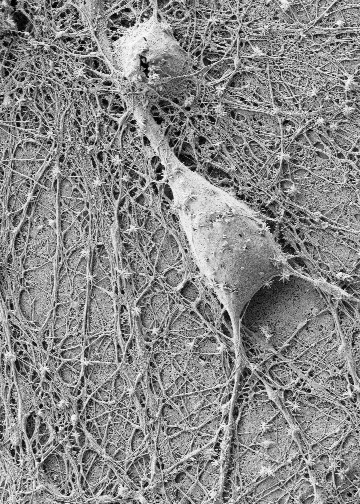
|
Perhaps the complex adaptive system of most interest to us humans is our own brain.
Each human brain is a collective of some 100 billion individual neurons linked in
a network that involves some 500 trillion connections (synapses) among the neurons.
All of the capacities of the human being, including the higher capacities of consciousness,
abstract thought, compassion, altruistic love, etc., are phenomena that emerge from
the incredibly complex network within the brain. But these capacities correspond
to new levels of existence and, though they emerge from the physical brain, they
cannot be understood through the behavior of individual neurons and synapses. In
this view, the human mind
emerges
from the physical brain. The mind is supported and affected by the physical brain
but an understanding of mind cannot be reduced to an understanding of individual
neurons and synapses any more than an understanding of the behavior of an ant colony
can be reduced to an understanding of an individual ant. The concept of emergent
phenomena, a central aspect of Complexity Science, supports the view of the human
mind that philosophers have labeled
non-reductive physicalism2.
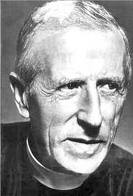
|
|
Pierre Teilhard de Chardin
|
What phenomena are likely to emerge from the network of minds within our human society?
We saw that in an ant society of sufficient complexity a superorganism, displaying
considerable intelligence, adaptability and survivability, will emerge from the
network linking the "minds" of the minimally intelligent individual ants.
The superorganism- the colony- displays a form of collective consciousness that
interacts with the external environment to provide for the protection, nourishment
and reproduction of the society. Just how collective consciousness emerges from
the network linking the individuals is not understood but it is clear from observation
that it does happen. I believe that a similar emergence is taking place within human
society that is related to what Teilhard de Chardin (1881-1955) called the
noösphere.
3
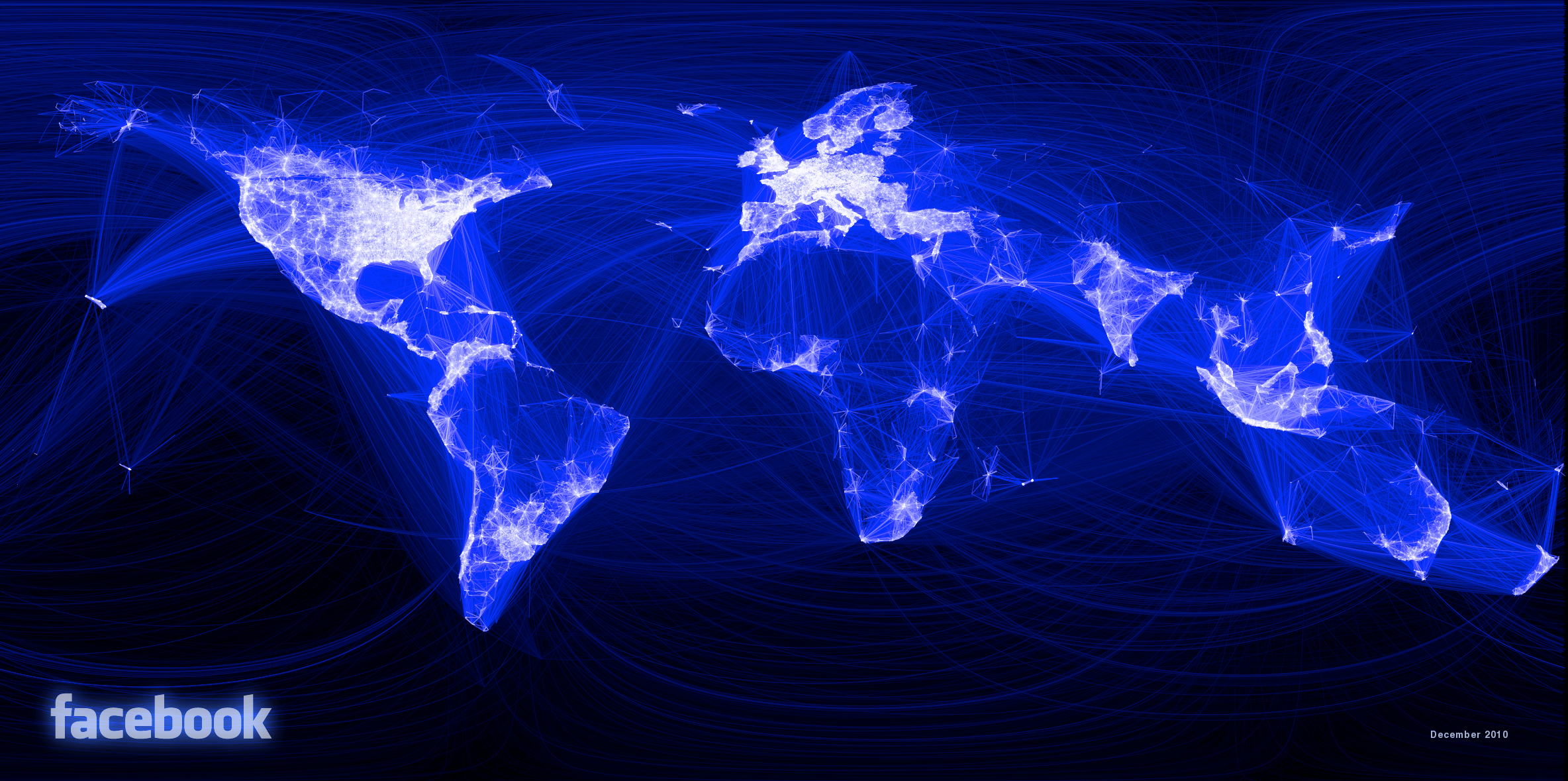
|
|
Facebook connections. Dec. 2010
|
Human society is, of course, much more complex than an insect colony. We are a society
of self-aware beings acting with free will. (We are
not the Borg.) The
physical links between human minds are what we call the
media that have
evolved to now include the internet with all of its powerful networking capabilities.
The noösphere is all of the combined media together with the content of those media.
In other words, it is the sum total of linked human consciousness. It is entirely
reasonable to believe that when the noösphere reaches some critical state a new
level of existence will emerge just as the superorganism of the ant colony emerges
when the ant population reaches some critical state. It is likely that the new level
of existence will be one of human wide (global) consciousness that reflects the
nature of the individuals within it and functions to protect and nourish the lives
of all human beings. I believe that in order to provide these functions the global
consciousness that finally emerges will reflect that humans are by nature free,
equal and responsible beings, each endowed with inalienable rights and, as we shall
see below, each engaged in the emergence of their individual spiritual nature. This
consciousness will include the righteousness and wisdom of protecting the planet
and the biosphere from which we emerged and by which we are nourished.
A regional consciousness has recently emerged in the noösphere linking the Arab
communities that recognizes the individual's right to freedom and democratic
governance. A wave of hope and courage has surged through that part of the noösphere
that has brought about leaderless, cooperative social rebellion against tyranny.
This is just a preview of how the evolution of the noösphere toward the emergence
of global consciousness is likely to eventually
bring about a transformation of human society. The success
of the efforts to transform the Arab communities is threatened by the current weakness
of the emerging global consciousness that would naturally support such transformation.
This weakness is what allows the autocrats, theocrats, and oligarchs of the world
to maintain their power (and wealth). But I believe evolution is a powerful force
and that the emergence of global consciousness will eventually reach fruition.
The view of the mind that comes from network thinking, i.e., as an emergent phenomenon,
provides a logical alternative to the ancient concept of mind-matter dualism that
lies at the heart of so much of the religious division within the human community.
This division has come about because of the implicit identification of the mind
with the idea of an immortal soul. This dualism dates back at least to Plato where
it is rephrased as a body-soul dualism. In Plato's view we consist of a body
and soul that are in irreconcilable conflict and the purpose of life is seen as
following certain prescriptions to prepare the soul for the afterlife. This dualistic
view of human nature has been adopted by many of the world's religions.
1. This description of ant behavior is derived from
the writings of biologist Nigel Franks as reported in Melanie Mitchell's delightful
book: Complexity - A Guided Tour (Oxford University Press, 2009).
2. Nancey Murphy, Bodies and Souls, or Spirited Bodies?, Cambridge University
Press, 2006, 69-70.
3. Pierre Teilhard de Chardin, The Phenomenon of Man, Harper Perennial
Modern Thought, 2008, first published in 1959.
Emergence of Spirit
|
|
Love emerges from our
relationship with the Creator expanding
our individual souls to include an awareness of The One.
|
If the mind is a phenomenon emerging from the physical, is there an immaterial aspect
of human nature that qualifies as immortal; i.e., that exists outside of spacetime?
If the soul is not the mind, what could it be? The metaphysical point of view that
I am espousing
1 is that what we call the soul emerges from our relationships
(interactions) with nature, with other human beings, and with our Creator. Our individual
minds emerge from the complexity of our individual brains and our individual souls
emerge from the complexity of our interactions with nature and with other human
beings alive or dead. If the individual soul is immortal it must exist outside of
spacetime and, as I explain above, I choose to label everything that exists outside
of spacetime as awareness. So the individual soul emerges as a non-local awareness that is
capable of a relationship with the Creator - who is awareness itself. In other words,
the individual human soul emerges as
self-awareness. I don't mean the
capacity for self-recognition that is exhibited by the interplay of other animals
with mirrors, but the awareness that you are aware, that you are aware, etc. As
far as we know, human beings are the only self-aware beings on our planet. (Though,
almost certainly, not the only ones in our universe.)
What is the nature of the relationship of an individual self-awareness with the
Creator - the totality of awareness? I believe, following Charles Williams
2,
that you and I
coinhere with each other and with the Creator through the mystery
of what we call Love. Most of us live out our lives in spacetime with our self-awareness
focused on the drama of our individual lives and building the network of connections
with other beings that forms the basis of our individual soul. But I believe the
full emergence of our individual soul occurs when Love expands our awareness to
realize our oneness with each other and with the Creator - who is Love and Awareness
itself. This is not blasphemy: being one with the Creator does not mean that we
are the Creator any more than an ant is the colony. Nor am I saying that the Creator
is a collective. All I'm saying is that Love emerges from our relationship with
the Creator, expanding our individual souls to include an awareness of The One.
I realize there is a certain circularity to what I'm saying. But that is because
as a mere creature I don't understand the mystery of the Love that makes us
coinhere as One. All I can do is to be humbly and profoundly thankful for the awareness
of its existence and try to facilitate the emergence of my individual soul by infusing
the network of all my connections with Love.
There is another level of potential emergence related to human existence and that
is the level emerging from the network of our individual souls. This network lies
outside of spacetime. It is a purely spiritual network and I described it in the
Reflections using the metaphor of a
hologram. In that description I stressed how there is an image encoded as
a pattern in the hologram that can be seen (decoded) only when the hologram is illuminated
with the same light used to create it. But another feature of the hologram is that
the decoded image reveals another dimension of existence beyond the hologram ( e.g.,
a 3D image from a 2D physical hologram). The extra dimension in the spiritual hologram
is the dimension in which the individual spiritual nodes and links are
unified
and the image reveals the nature of that unity - the Creator. The light is Awareness
and the extra dimension is Love. The clarity of the image revealed to the individual
soul depends on the degree to which that soul is linked to the hologram through
freely established connections of love and awareness. Though this is only a metaphor,
I have come to believe that the hologram is, in fact, a reasonable first-order model
for the spiritual nature of self-aware beings
3.
How does top-down causality work in this situation? That is, how does the emergent
behavior in the collection of individual souls affect the individual soul and
then, from there, affect the individual mind? The only point of contact I see among
them is thought, or, its product, ideas. Though a thought may result from electromagnetic
activity in the brain, is an idea material? Can an idea be localized in spacetime
or have any measurable physical properties? I don't see how. If ideas are immaterial,
they could be the vehicle for top-down causality between the collection of souls
and the individual soul.

|
|
Carl Gustav Jung
|
Carl Jung believed that there is a form of universal ideas (archetypes) existing
in what he called the
collective unconscious that affect the basic levels
of the mind of all human beings. This form of top-down causality operates on our
basic levels of mind primarily through dreams but, maybe, also through chemically
altered states that result in trances, visions, or other dream-like conditions.
I believe the higher levels of our individual minds can also be affected by the
collection of all human souls living or dead, with whom our souls are connected
in awareness and love, through the phenomenon we call inspiration. We can open our
minds to inspiration through practices that quiet and focus the mind, such as silent
meditation, chanting, and prayer.
1.This point of view is inspired by Nancey Murphy,
a Neuroscientist and Professor of Christian Philosophy at Fuller Theological Seminary.
(Nancey Murphy, Bodies and Souls, or Spirited Bodies?, Cambridge University
Press, 2006.) Professor Murphy makes the interesting observation that the Platonic
view of human nature as a body-soul dualism is not specifically supported anywhere
within the Bible.
2.Barbara Newman, Charles Williams and the Companions of the Co-Inherence, Spiritus,
9.1, 1-26, 2009.
3.I have come to suspect that this spiritual model can be made more realistic and
provide a deeper understanding by considering the Creator to be a living Being,
and, perhaps, the hologram to be alive as well. (If awareness is alive, wouldn't
information be its nourishment?)
Santa Fe, New Mexico
March 1, 2011